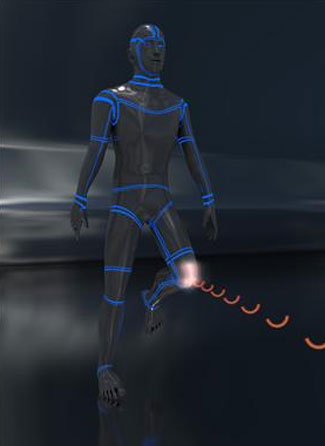| Jun 16, 2011 |
Stretchable electronics report how you feel
|
|
(Nanowerk News) Electronics that can be bent and stretched might sound like science fiction. But Uppsala researcher Zhigang Wu, working with collaborators, has devised a wireless sensor that can stand to be stretched. For example, the sensor can measure intensive body movements and wirelessly send information directly to a computer. The findings are now being presented in the journal Advanced Functional Materials ("A Microfluidic, Reversibly Stretchable, Large-Area Wireless Strain Sensor").
|
|
Robots of liquid metal, as in the Terminator movies, are probably the best-known cases of deformable electronic systems. But so far this only exists in our imagination. Twisting, folding, and stretching fragile conventional electronics is not yet possible.
|
 |
| The stretchable antenna that wireless transmits information to a computer open the door for new and exciting applications that previously only been seen in movie theathers.
|
|
The latest advances in the field of µFSRFE (microfluidic stretchable radio frequency electronics) have shown the possibility of combining established stiff electronics components with channels of elastomers filled with fluid metal. In this way it has been possible to construct systems that after severe mechanical deformation can manage to return to their original form. Such electronics can adapt to nearly any bent and moving surfaces on a human being or a robot and can thus serve as a second layer of smart e-skin for health monitoring or remote control.
|
|
The researcher Zhigang Wu from Uppsala University, in collaboration with researchers at the company Laird Technologies, has presented a newly developed and wireless µFSRFE sensor consisting of a multifunctional antenna integrated with a conventional rigid circuit board. The reporting sensor can measure intensive body movements and wirelessly send information directly to a computer. The design enables wireless measurement of repeated bending across a large area or moveable parts.
|
|
The sensor they designed will pave the way for myriad new applications that until now have only been seen on the movie screen.
|

